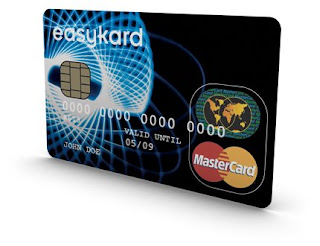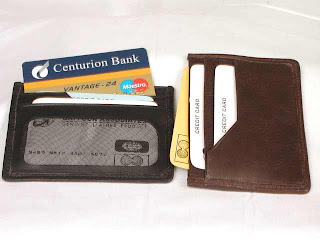 Balance transfer credit cards can provide an excellent option for debt consolidation. Many Americans are currently in debt and struggling for a way out. Some choose to use a home equity loan to help get themselves out of debt, but not everyone has a home with built up equity to use for this purpose. In addition, putting your home up as collateral for debt consolidation can be a bit nerve-wracking and many banks enforce annual maintenance fees and monetary penalties if you try to close the equity line before a specified period of time.
Balance transfer credit cards can provide an excellent option for debt consolidation. Many Americans are currently in debt and struggling for a way out. Some choose to use a home equity loan to help get themselves out of debt, but not everyone has a home with built up equity to use for this purpose. In addition, putting your home up as collateral for debt consolidation can be a bit nerve-wracking and many banks enforce annual maintenance fees and monetary penalties if you try to close the equity line before a specified period of time.Rising Interest Rates
Anyone that has been a credit card holder for some time or who pays attention to the financial marketplace knows that credit card rates on many cards have been on the rise. Often, credit card companies are more than happy to increase interest rates when the prime rate is raised, but they are not so quick to bring the rates down when the prime rate decreases. By consolidating your debt with a balance transfer credit card, you can remove your debt from your high interest cards and place it on your card with a lower interest rate. The best balance transfer credit cards offer low introductory rates or low fixed rates on balance transfers, making them a great option for debt consolidation.
What to Look For
When looking for a balance transfer card for debt consolidation, you generally want to find the card with the lowest long-term rate. More than likely, you will be consolidating a debt that you will be unable to pay in a short period of time. If this is the case, your low interest introductory period may be over long before you are done paying off the debt.
You also need to be cautious about fees when looking to consolidate debt with a balance transfer credit card. Many credit cards charge a fee for transferring balances from another card onto theirs. The best balance transfer credit cards will not charge an additional fee. In addition, some balance transfer credit cards require transferred balances to be requested at the time of application for the card in order to be eligible for the special introductory offer. While this may be fine for some people, you might want to have the flexibility to transfer balances. In this case, you will want to select a card that allows you to transfer balances any time throughout the introductory period.
For the very best balance transfer credit cards, you will want to find one that maintains the low APR throughout the life of the balance you have transferred. In other words, a balance you transfer on a card may have a 0.00% APR for the first six months, but then rocket to 19.99% when the period is over. On the best balance transfer credit cards, however, the low introductory offer remains in place until you pay off the entire amount you have transferred.
Self-Discipline
Obviously, a balance transfer credit card cannot do all of the work for you. While you can consolidate all of your bills onto just one card, you will need to be disciplined enough to pay the balance off. If your introductory period expires after so many months, you should create a budgetary plan that will have the balance paid off by the time the period is over. You might need to cut out some of the extras, such as the cup of fancy coffee you grab every morning, to help create a little extra cash flow. It will be well worth it when you find yourself out of debt. In addition, the money you are saving in finance charges should be paid toward your credit card debt













